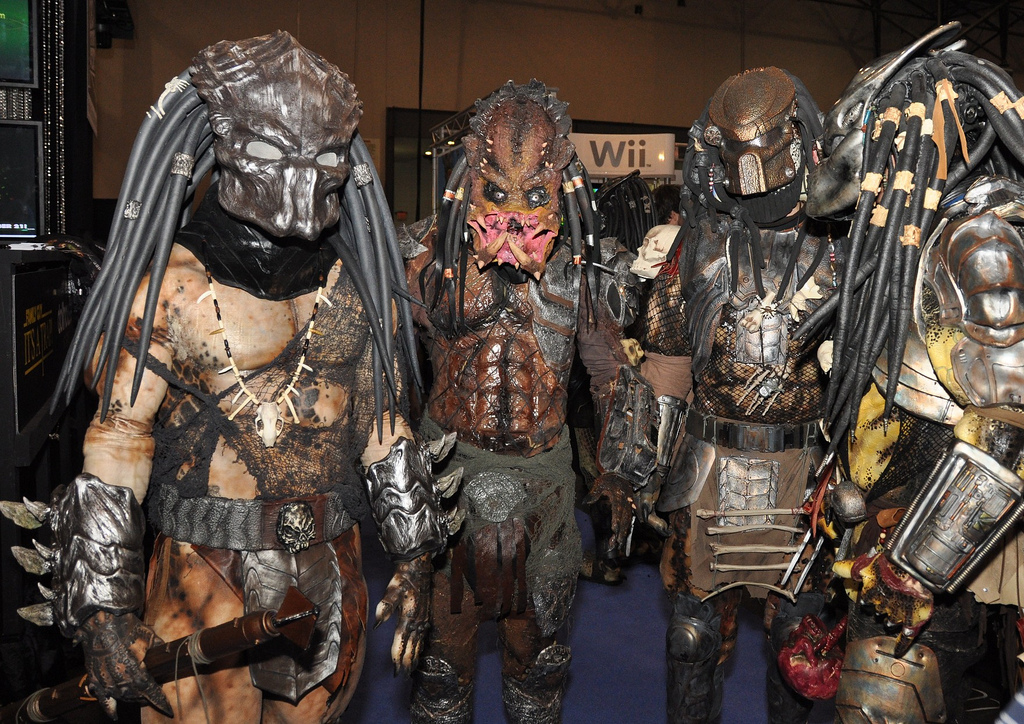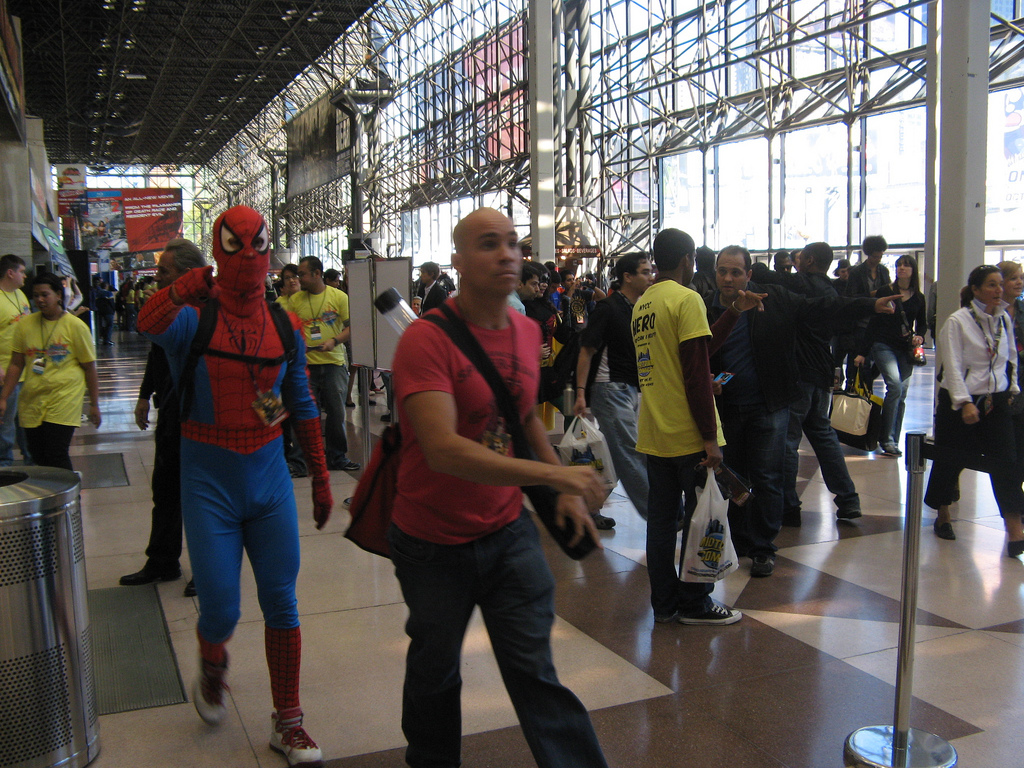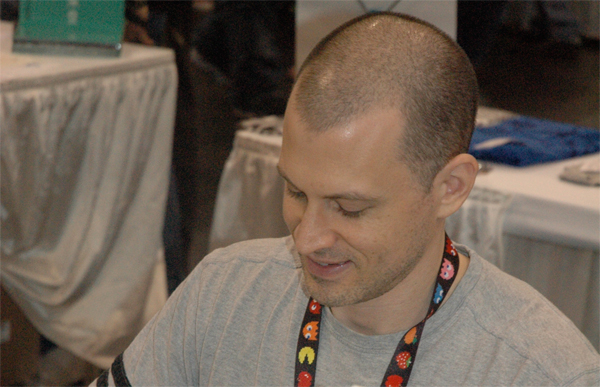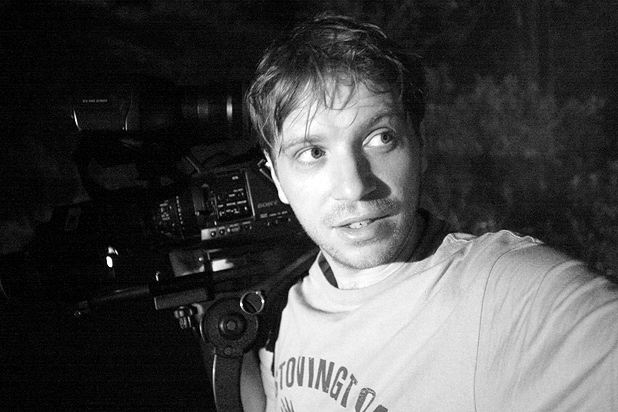

Thousands of alien creatures, monsters, warlocks, gargoyles, gremlins, super heroes and super villains gathered together for a single weekend to escape the confines of society and to celebrate the one thing that brings them all together: being a nerd.

New York Comic Con (NYCC), an annual convention dedicated to comic books, graphic novels, anime, manga, video games, toys, movies and television, kicked off Oct. 8 in New York City’s Jacob K. Javits Convention Center, opening its doors to a flood of fandom.
Celebrating its fifth year, the event was not only the largest it has ever been in terms of size, but in attendance as well — filled by over 100,000 adoring fans ready to “get their geek on.”
“For those of us who worked on [NYCC] five years ago, it’s kind of hard to believe how big it’s gotten, how many of you come and how impressive the event is today,” said NYCC founding member Greg Topalian in a keynote speech. “Without support, this never would have happened.”
With tickets sold out during its second day, the convention was host to more than 300 panels featuring advanced screenings and never-before-seen tidbits of the newest offerings in the entertainment industry.
When perusing the center’s main floor, attendees were greeted by thousands of comics ripe for picking and exclusive tastes of the newest video game releases like “Dead Space 2” and Microsoft’s “Kinect.”
Sticking with the event’s theme, artists and writers from around the globe gathered to promote their work, meet fans and share their passion for comics.
“There’s really nothing better than a large group of people, face to face, that are actually coming together and meeting,” said comic book visiting artist Stuart Moore. “People are really drawn to that, especially people with common interests like comics. Also, they get to meet the artists, writers and filmmakers they love. It’s just a great gathering point in an important social nexus.”
Select Artists of Comic Con
Written by Maxim Alter with additional reporting by Anthony Chanza
Scott Wegener, Comic Book Artist and Brian Clevinger, Writer
As creators of “Atomic Robo,” a series depicting the adventures of a super-powerful, time-traveling robot, Wegener and Clevinger have a unique method of collaboration.
“Some of our characters, like the ghost of Edison, have actually been accidents,” said Wegener. “I had been drawing random undead historical figures and [Clevinger] ended up writing an entire story around it.”
“Atomic Robo” went through many different forms, but after putting their heads together, Wegener and Clevinger created an award-winning mish-mash of all the things they loved as kids.
Clevinger said any writers who want to break into the industry and bring their characters to life should be open to collaboration.
“Once you see it all come together, it’s just so fun and cool,” Clevinger said.
Stuart Moore, Writer

As one of the founding editors of Vertigo, an imprint of DC Comics, Moore has spent his career adapting and gathering inspiration from writers he greatly respects.
“For fiction in general, I’m a huge fan of Philip K. Dick and Robert Anton Wilson,” Moore said. “Both writers have informed my new graphic novel, ‘Shadrach Stone.’”
Now, as a popular author of many mainstream comics, Moore has written story arcs for characters such as Iron Man, Spider-Man and Wolverine.
Moore said, although the economy has hit a rough patch, there is still a lot of hope for comic book fans.
“There’s this gloom and doom talk about the industry and I don’t undersand it,” he said. “Sales of regular comic books have been steady and we’re only beginning to tap the digital market. There’s going to be a lot of activity for years to come.”
Ron Garney, Comic Book Artist

Known for his work on issues of “The Amazing Spider-Man,” “Silver Surfer,” “Hulk” and “Captain America,” Garney has gained a following from both his artwork and writing.
Garney said he attributes his success to his ability in taking criticism.
“You can’t close yourself off or be egotistical on any level,” he said. “Don’t take things personally. You have to go through criticism in order to grow.”
Garney said he has been influenced by countless artists throughout his career, but two of his favorites are Alex Toth and John Buscema.
Garney said aspiring artists should send samples to the specific companies that represent the characters they enjoy illustrating.
“Target an editor and keep at it,” he said. “The important thing is not to quit.”
Chris Giarrusso, Comic Book Artist

During his youth, Giarrusso became enamored with the comic strips inside of his family’s daily newspaper.
As an adult, he introduced the comic industry to age-friendly creations like “Mini Marvels” and “G-Man,” hoping to inspire young readers.
“It feels great to have stuff appreciated, recognized and getting into the hands of new readers like kids or people that wouldn’t normally read comics,” said Giarrusso.
After creating “Mini Marvels,” a collection of stories following Marvel superheroes as children, Giarruso’s work began appearing as back up strips and features in many Marvel comics.
With the advent of Web comics, Giarrusso said aspiring artists and writers can easily benefit from flaunting their work over the Internet.
“Get a website to show everyone your material,” he said. “It’s a lot cheaper and easier than printing books.”
Gareth Edwards, Filmmaker By Andrew Wyrich

“Monsters,” a film directed by Edwards, isn’t your run-of-the-mill monster movie.
At a panel, in front of about 150 people, Edwards described his first foray into filmmaking while directing what he called “the world’s most realistic monster movie.”
With a limited release in the United States on Oct. 29, “Monsters” is the story of a journalist and an American tourist’s struggle through Mexico six years after Earth has suffered an alien invasion.
Edwards called the movie a “road movie,” which was first pitched as “The Blair Witch Project” combined with “War of the Worlds.” However, Edwards said he couldn’t actually pin down what the film’s journey was really about.
“If you can sum up a movie in a sentence, what’s the point of making it?” Edwards said.
The only two casting decisions made before filming were the parts for the two main characters of the film. The others, according to Edwards, were people the crew met minutes before filming.
Filmed for slightly over $15,000, “Monsters” was shot in an “opportunistic” manner and Edwards himself filmed most of the scenes. The crew mimicked in real life what was written into the characters’ fictional journey. Edwards said anything along the way they thought to be interesting was incorporated into the final cut – which led to many important scenes.
“With our film, we did not have a bullseye,” Edwards said. “We shot something first and then added a bullseye afterward.”

